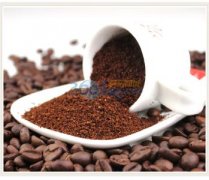Coffee knowledge Ethiopian coffee is expected to increase year by year
Although Ethiopia is the home country of Arabica, it is difficult to talk about the average yield per hectare. Central and South American countries can produce an average of one to two tons of coffee beans per hectare, but Egypt is only about 500,600 kilograms, which is really ugly. However, this situation has improved year by year, especially after Egypt forced Starbucks to give in and take control of the trademarks of Yegashefi, Harald and Sidamo in June of the second ○○, which provided a great impetus for future production. In addition, official research units have made great efforts to screen varieties with high production capacity and high quality over the past 30 years, and have also achieved results. Since 1978, the Jima Agricultural Research Center has selected 23 high-yield varieties with strong disease resistance from the Jiafa forest in the southwest and distributed them to farmers for planting. In recent years, researchers have further developed three excellent varieties with elegant wild varieties and high-yield Arabica hybrids, which can strike a balance between yield and quality.

Belachu, a senior researcher at the Gemma Agricultural Center, said: "what is exciting is that the cup test performance of these three new hybrid varieties is excellent and the yield is also very high. Cultivation data from the laboratory show that an average of 26 tons of raw beans can be produced per hectare, and it is estimated that it can also reach 1 per hectare when allocated to farmers for field planting. A record of 6 tons of coffee beans. In addition, these new varieties can also adapt to the climate, soil and water in different parts of Ethiopia, and many farmers have applied for planting. In a few years, we will see the results of the new varieties in helping farmers improve their yield and quality. Over the past decade, we have increased our production from 500 to 600 kilograms per hectare to 800 to 1200 kilograms per hectare, and it is expected that China's coffee production will increase further. The planting area of coffee will also increase to 600000 hectares from 400000 hectares five years ago. As long as Ethiopian boutique beans are popular, this trend of increasing production will continue. "
Seven years ago, the annual output of Ethiopian coffee was about 150000-180000 tons. After the millennium, it has jumped to 250000 tons. The second ○⊙ has even jumped to 300000 tons in six years, and the second ○○ has increased to 320000 tons in seven years. Experts predict that the second ⊙○ will increase to 360000 tons in eight years and export 20, 000 tons. There is an urgent need for Ethiopia to expand coffee production. Domestic coffee consumption alone is very high, with 40% to 50% of annual output supplying domestic demand. After the millennium, Ethiopia's strong role in coffee research and marketing is refreshing. In six years, two ⊙⊙ has overtaken India to become the world's fifth largest coffee producer. If we work harder, we can challenge Indonesia in fourth place with a production capacity of more than 400000 tons.
Important Notice :
前街咖啡 FrontStreet Coffee has moved to new addredd:
FrontStreet Coffee Address: 315,Donghua East Road,GuangZhou
Tel:020 38364473
- Prev

Arabica coffee originated from the common sense of Ethiopian coffee.
Ethiopia is a coffee-producing country with many legends, numerous varieties, rich orange fragrance and many fresh things, and there is no second country in the world that can compete with it. Ethiopia's long coffee history and cultural scenery have attracted a large number of explorers, archaeologists, botanists, anthropologists and writers to Fangze. The sleeping lion of Africa suddenly woke up after the millennium and burst into bursts.
- Next

Coffee Common sense Coffee Bean Grade Analysis in Ethiopia
Ethiopian coffee beans are divided into five levels. The first and second stages are washed beans. Washed beans Grade1 represents 3 defective beans per 300g raw beans, and Grade2 represents 4 defective beans per 300g. Gradc1 grade water washed beans are very rare and are generally difficult to buy. At present, all the washed beans exported from Ethiopia are Grade2 grade. The quality of sun-dried beans is Grade3 and Grade4 in order.
Related
- Beginners will see the "Coffee pull flower" guide!
- What is the difference between ice blog purified milk and ordinary milk coffee?
- Why is the Philippines the largest producer of crops in Liberia?
- For coffee extraction, should the fine powder be retained?
- How does extracted espresso fill pressed powder? How much strength does it take to press the powder?
- How to make jasmine cold extract coffee? Is the jasmine + latte good?
- Will this little toy really make the coffee taste better? How does Lily Drip affect coffee extraction?
- Will the action of slapping the filter cup also affect coffee extraction?
- What's the difference between powder-to-water ratio and powder-to-liquid ratio?
- What is the Ethiopian local species? What does it have to do with Heirloom native species?

